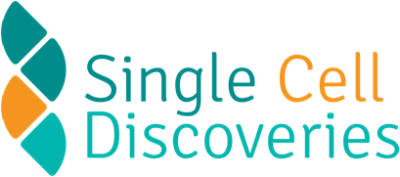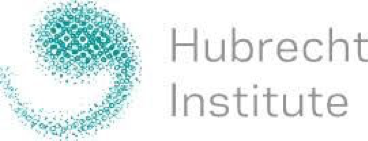Following cancer cell populations in treated chronic lymphocytic leukemia patients
In this project, the Hubrecht Institute for Developmental Biology and Stem Cell Research (KNAW) collaborates with Single Cell Discoveries B.V. and the University Medical Center Utrecht to characterize the B cell repertoire of chronic lymphocytic leukemia patients before and after treatment. We will use a state-of-the-art microfluidics technology to simultaneously measure the B cell receptor (BCR) sequence and the gene expression profile of thousands of individual B cells from the same patient.
Chronic lymphocytic leukemia (CLL) is the most common form of leukemia in the Western world. In the Netherlands nearly 7,000 patients suffer from CLL, with over 800 new cases of CLL each year. To date, no therapy has been able to cure CLL. Many patients require continuous treatment for longer periods of time, with costly agents that have side effects impacting everyday life. If we are able to better identify CLL cases at risk for early relapse upon therapy, we can decide to increase the intensity of disease monitoring for those patients. In contrast, treatment can be stopped earlier in patients with low risk of relapse, thereby minimizing side effects and reducing costs.
Single-cell RNA-sequencing (scRNA-seq) allows the characterization of the gene expression profiles of individual cells. The genes that are expressed in a cell determine its behaviour. Recently, a droplet-based scRNA-seq technology was developed that allows characterization of both the BCR sequences and expression profiles of up to 10,000 individual cells per sample. We will use this technique to reconstruct the clonal composition in CLL patients before and after treatment at single-cell resolution.
Characterization of BCR repertoire shifts in treated CLL patients will improve our understanding of CLL tumor biology. Additionally, characterization of the expression profiles of malignant clones will be valuable for the development of novel treatments and improvement of existing treatment strategies.
In total we have analyzed 31 samples from 15 CLL patients totalling 175,000 sequenced cells. A key observation from our data is the surprising clonal homogeneity of B-cells within each patient. Nonetheless, two patients show very intriguing drug response patterns, with shifts in gene expression between two main subclones. Additionally, for 3 patients paired biopsies (bone marrow versus peripheral blood) have been sequenced and processed. The clonal composition of B cells in the bone marrow was very similar to the clonal composition of B cells in the peripheral blood. Finally, this data-set has been implemented into an R-Shiny App. All samples have been incorporated, with gene expression and B-cell/T-cell receptor information. This open-source atlas represents a large resource.


